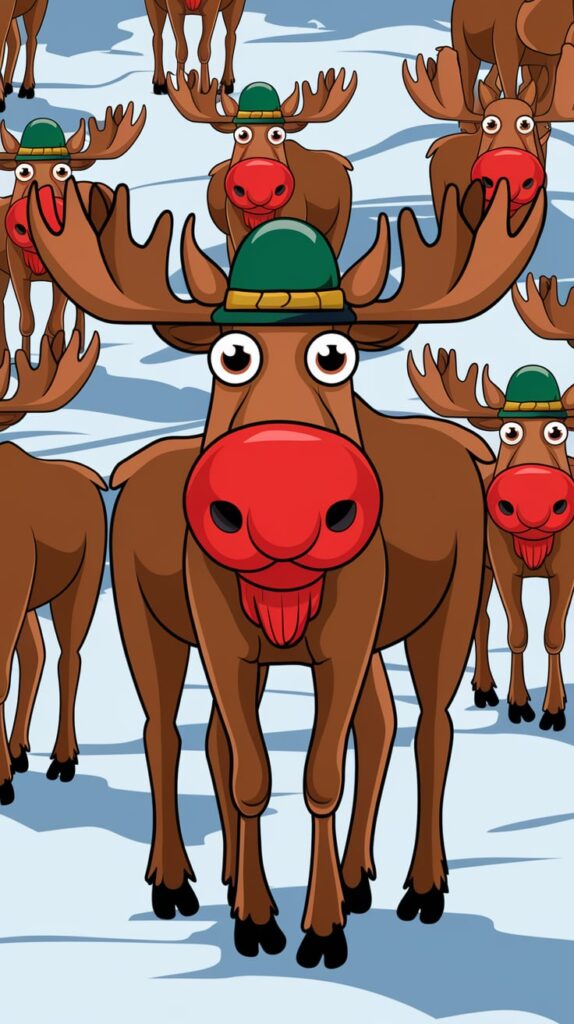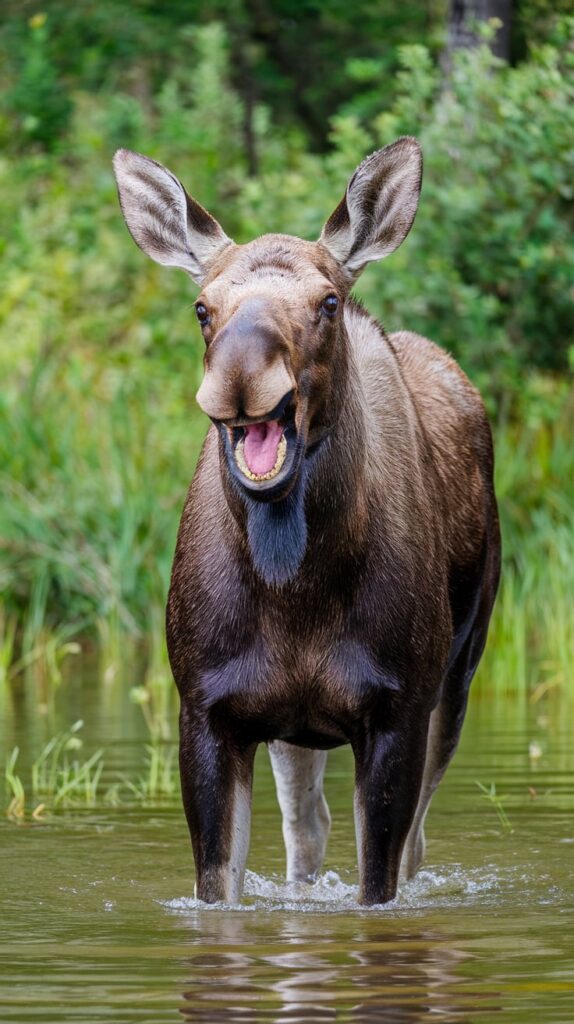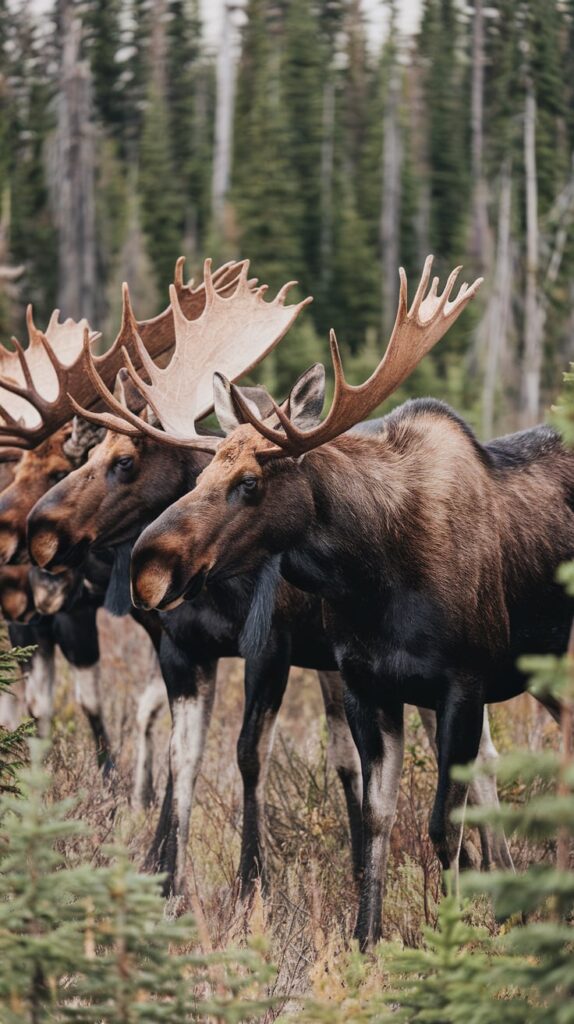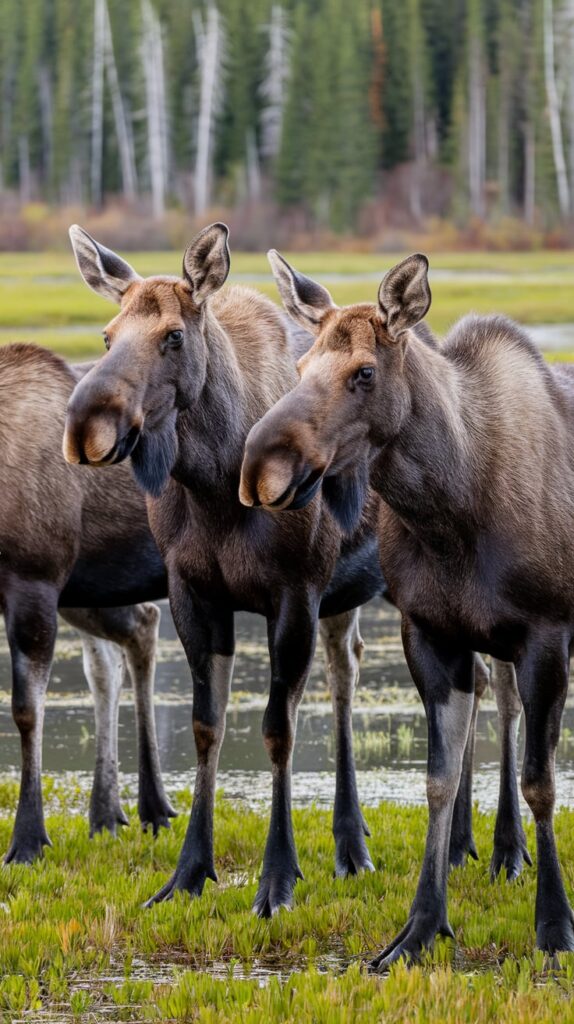If you’ve ever pondered what’s the plural of moose, you’re not alone. This question has amused and confused countless people. Is the plural of moose moose, mooses, or even meeses?
In this comprehensive exploration, we’ll dive deep into the plural form of moose, its definition, origins, and the fascinating grammatical quirks that surround it. By the end, you’ll have a thorough understanding of the plural of moose and the context in which it is used.
read more : Afterward or Afterwards – Grammar Beacon

Definition of Moose
To fully appreciate what’s the plural of moose, we first need a clear definition of moose. A moose is a large, herbivorous mammal from the deer family, notable for its towering stature, long legs, and distinctive antlers.
These majestic creatures primarily inhabit the colder climates of North America, Europe, and Asia, preferring areas rich in vegetation, such as forests and wetlands.
Characteristics of Moose
Moose are uniquely adapted to their environments, exhibiting characteristics that help them thrive in cold weather:
- Size: Adult moose can weigh over 1,500 pounds, making them one of the largest land mammals in North America.
- Diet: They are browsers, feeding on leaves, small trees, and aquatic plants.
- Antlers: Male moose, known as bulls, grow large, palmate antlers that can span up to six feet across during the mating season.
Understanding these characteristics not only highlights the uniqueness of the moose but also adds context to discussions about their population and habitats.
read more : Trash vs Garbage – Grammar Beacon
Origin of the Word “Moose”
The term “moose” has an interesting linguistic history. It originates from the Algonquian languages, specifically from the Abenaki word moos, which means “he strips off.” This is a reference to the moose’s feeding habits, as they often strip leaves from branches.
The adoption of this term into English reflects the historical interactions between Native American cultures and European settlers.

Cultural Context
The word “moose” embodies more than just a biological definition; it represents the deep cultural ties between Indigenous peoples and their environment.
This connection is crucial for understanding the significance of the moose in both ecological and cultural terms.
Is Moose Singular or Plural?
So, is the plural of moose moose, mooses, or meeses? The definitive answer is that moose serves as both the singular and plural form. You can say “one moose” or “several moose,” and both are correct.
This characteristic categorizes moose as an irregular noun, which is a fascinating aspect of English grammar.
Understanding Irregular Nouns
Irregular nouns often defy the standard rules of pluralization. While most English nouns form plurals by adding “-s” or “-es,” moose remains unchanged in both singular and plural forms.
This can lead to confusion but also adds an element of surprise to the language.
Why Is There Confusion over the Plural of Moose?
You might be wondering, why is there confusion over what’s the plural of moose? The confusion arises primarily because English typically follows predictable patterns when forming plurals. Most nouns change from singular to plural by adding “-s” or “-es.”
read more : Ethos in Literature – Grammar Beacon

The Playfulness of Language
This deviation from the norm encourages playful alternatives like “mooses” or “meeses,” which often lead to humorous debates. The playful aspect of language allows for creativity and fun while learning, making the topic more engaging.
Is Moose a Countable or Uncountable Noun?
Another critical question is: is moose a countable or uncountable noun? Moose is a countable noun, meaning you can count them as individual entities. Instead of saying, “I saw much moose,” the correct phrasing would be “I saw five moose.”
This distinction emphasizes that moose can be quantified, contrasting them with uncountable nouns like water or sand.
read more : End Rhyme examples in Poetry – Grammar Beacon

Examples of Countable Usage
Here are several examples to illustrate the countability of moose:
- One moose stood majestically by the river.
- We spotted three moose during our hike in the national park.
- A group of tourists observed many moose in their natural habitat.
These examples reinforce the idea that moose can be easily counted and quantified.
Plural of Moose Example Sentences
To further clarify what’s the plural of moose, here are several example sentences that showcase its usage in different contexts:
- A herd of moose grazed peacefully in the meadow.
- We watched the moose as it swam across the lake.
- Last winter, I encountered several moose while snowshoeing in the woods.
These sentences demonstrate how moose functions effectively in both singular and plural forms.
Collective Nouns for Moose
When discussing groups of moose, you may encounter collective nouns for moose. While there isn’t a universally accepted term specifically for moose, phrases like a herd of moose or a gang of moose are commonly used to describe multiple individuals.
Examples of Collective Usage
- A herd of moose wandered through the forest, foraging for food.
- During our trip, we witnessed a gang of moose interacting playfully by the water.
Using collective nouns adds depth and clarity to descriptions of moose in their natural settings.
Understanding Plural Nouns
Understanding how plural nouns function is essential for mastering English. While some nouns follow predictable rules for forming plurals, others, like moose, present unique challenges. Here’s a concise overview of how pluralization works in English:
- Regular Nouns: Typically form plurals by adding “-s” or “-es” (e.g., cat → cats, box → boxes).
- Irregular Nouns: Change form entirely or remain unchanged (e.g., child → children, moose → moose).
- Uncountable Nouns: Remain in singular form (e.g., information, furniture).
Recognizing these patterns is vital for effective communication, ensuring clarity and accuracy in both spoken and written English.
Scenario Examples for Possessives
Exploring possessives related to moose can enhance your understanding of ownership and context. Here are examples illustrating different types of possessives:
Singular Possessive
- The moose’s antlers were impressive, standing tall above its head.
- We followed the moose’s tracks through the snow, leading to a hidden grove.
Plural Possessive
- The moose’s habitats are crucial for their survival in the wild. (referring to multiple moose)
- The moose’s migration patterns change with the seasons.
Compound Possessive
- The hunter’s moose’s antlers were displayed in the local museum.
- The biologist’s study of moose’s behaviors revealed intriguing insights.
Indefinite Possessive
- Any moose can become defensive if it feels threatened in its territory.
- Moose have their own preferred feeding areas, which they frequent regularly.
These examples showcase how possessives can effectively convey relationships between moose and other nouns.

Fun Facts About Moose
To enrich our discussion, here are some fun facts about moose that highlight their uniqueness:
- Moose can swim up to six miles and can dive underwater to feed on aquatic plants.
- During the mating season, male moose can become quite aggressive as they compete for females.
- Moose have a unique feature called a bell, a flap of skin that hangs beneath their throat, which helps them with thermoregulation.
These tidbits not only provide interesting insights but also enhance your understanding of the ecological role of moose.
The Importance of Moose in Ecosystems
Moose play a crucial role in their ecosystems. As browsers, they help regulate vegetation growth by consuming shrubs and young trees, which in turn promotes biodiversity. Their grazing habits create open spaces in dense forests, benefiting other wildlife.
Moose and Biodiversity
By foraging on various plants, moose contribute to the overall biodiversity of their habitats. Their presence can influence the distribution of plant species, creating a more diverse and balanced ecosystem.
Cultural Significance of Moose
In many cultures, especially among Indigenous peoples, the moose holds significant cultural and spiritual importance. These communities have historically relied on moose for sustenance, using every part of the animal for food, clothing, and tools.
Symbolism and Traditions
In various Indigenous traditions, the moose symbolizes strength, resilience, and adaptability. It often appears in folklore and stories that celebrate the natural world and the relationships between humans and animals.

Challenges Facing Moose Populations
As majestic as they are, moose populations face numerous challenges. Habitat loss, climate change, and increased human activity threaten their survival. Understanding these challenges is essential for conservation efforts aimed at protecting these remarkable creatures.
Conservation Efforts
Efforts to protect moose populations include habitat restoration, creating wildlife corridors, and implementing sustainable land-use practices. Conservation organizations work tirelessly to ensure that future generations can appreciate the beauty of moose in their natural habitats.
Wrapping Up
In conclusion, the answer to what’s the plural of moose is simple: it’s just moose. This unique aspect of the word highlights the intricacies and irregularities of the English language.
Understanding the plural of moose, its origins, and its grammatical context not only enriches your vocabulary but also enhances your appreciation for both the animal and the language that describes it.
The next
time someone asks, is the plural of moose moose, mooses, or meeses?, you can confidently share the answer, while also explaining the fascinating linguistic journey behind it.
With roots in Native American languages and its status as a countable noun, moose serves as an excellent example of the richness and diversity of the English language.
If you have further questions or seek more clarification on this or any other topic, feel free to reach out! Understanding the plural of moose not only enriches your language skills but also connects you to the beauty of nature and its creatures.

James Logan is a seasoned blogger and language enthusiast behind Grammar Beacon. With years of experience in grammar and writing, James shares his expertise through insightful and engaging content. His passion for clear communication and linguistic precision shines in every post, making complex grammar concepts accessible and enjoyable for readers. Follow James for expert advice and tips to refine your writing skills.







